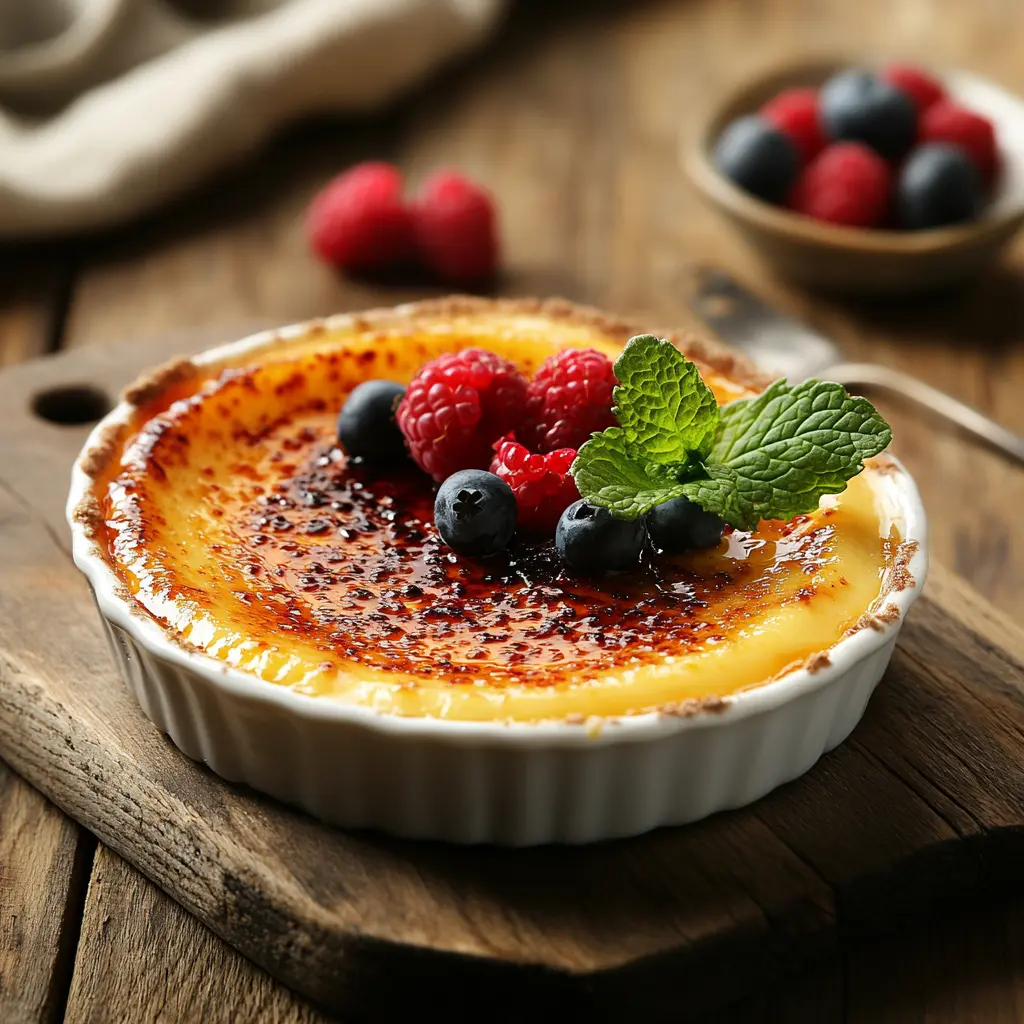Introduction
Crème brûlée, a classic French dessert, is more than just a sweet treat; it’s an experience. This indulgent dish brings together a creamy custard base and a caramelized sugar topping, creating a delightful blend of textures and flavors. But what makes crème brûlée so special, and what exactly does it taste like? Whether you’re a food enthusiast or simply curious, this article dives deep into the essence of crème brûlée, exploring its origins, flavor profile, textures, and much more. Let’s unravel the magic behind this iconic dessert.
Part 1: Understanding Crème Brûlée
What is Crème Brûlée?
Crème brûlée, translated as “burnt cream” in French, is a timeless dessert rooted in European culinary traditions. With its rich custard filling and a caramelized sugar crust, it’s a dish that effortlessly balances simplicity with sophistication. While many associate it with high-end dining, it has a humble origin and a universal appeal.
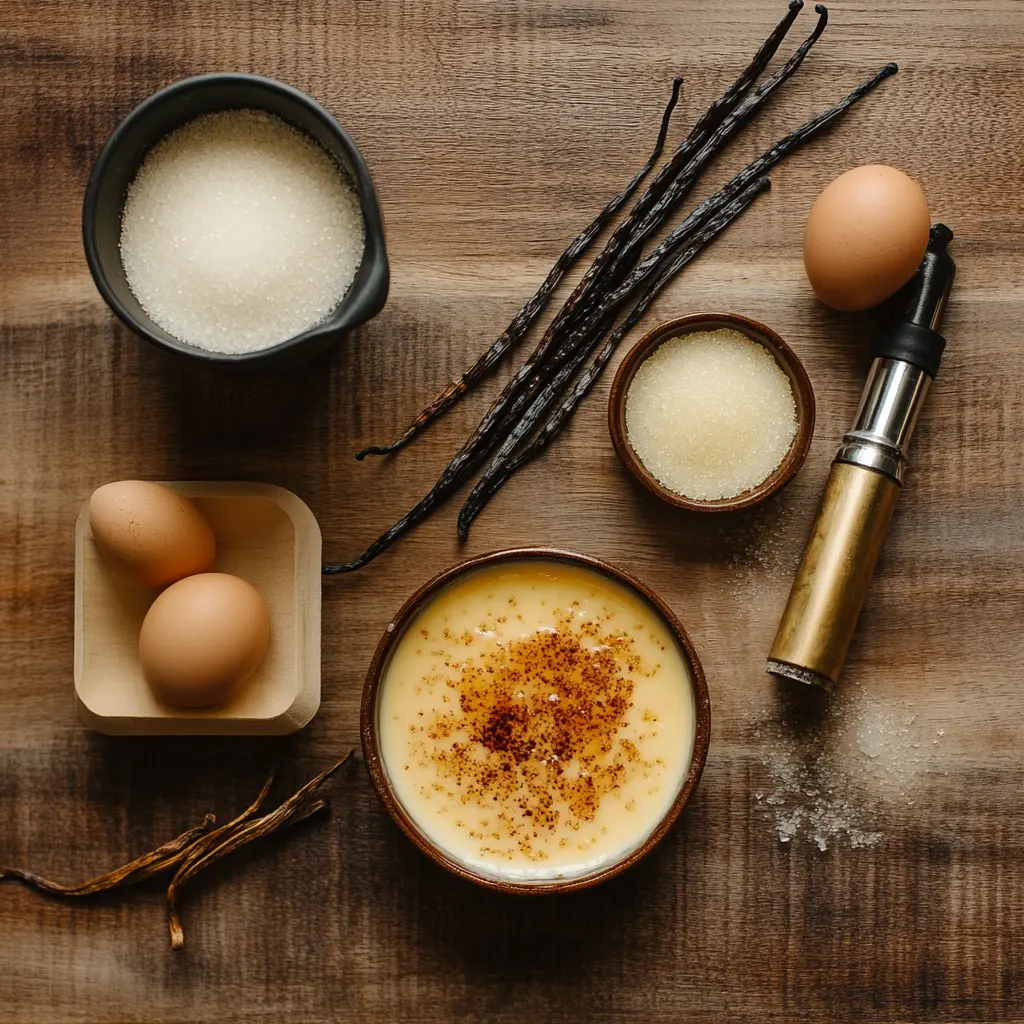
Dating back centuries, crème brûlée’s first documented mention appeared in a 1691 French cookbook. Though its exact birthplace is debated, its enduring popularity is indisputable. In essence, it’s a dessert where culinary science meets artistry. The top layer, carefully torched to perfection, contrasts beautifully with the silky custard below.
Traditional Ingredients of Crème Brûlée
The magic of crème brûlée lies in its simplicity. Its ingredient list is delightfully short yet impactful, focusing on vanilla, cream, eggs, and sugar. Here’s a closer look:
- Cream: The foundation of crème brûlée is heavy cream, giving it a luscious, velvety texture.
- Egg Yolks: Egg yolks add richness and ensure the custard sets while staying delightfully smooth.
- Sugar: Both in the custard and as the caramelized topping, sugar plays a dual role in sweetening and providing a satisfying crunch.
- Vanilla: The addition of pure vanilla extract or beans infuses a subtle yet irresistible flavor.
These humble ingredients come together to create a dessert that feels indulgent yet approachable. The caramelization process transforms the sugar topping into a brittle shell, adding complexity to every bite.
Why Crème Brûlée Stands Out
Crème brûlée’s charm lies in its harmonious blend of flavors and textures. It’s sweet but not overpowering, with a touch of bitterness from the caramelized sugar. Moreover, its creamy custard base is light yet rich—a perfect contradiction. While many desserts rely on complex techniques or exotic ingredients, crème brûlée captivates with its simplicity and elegance.
With every spoonful, you’re treated to a culinary paradox: a dessert that feels light yet decadent, familiar yet extraordinary. It’s no wonder crème brûlée has become a symbol of refined indulgence worldwide.
Part 2: The Flavor Profile of Crème Brûlée
The Sweetness of the Custard
The heart of crème brûlée is its silky custard, which offers a delicate sweetness that’s both subtle and indulgent. Unlike overly sugary desserts, crème brûlée strikes a balance that caters to a wide range of palates. The custard’s primary flavors are brought to life by vanilla, which enhances its overall depth without overpowering the natural creaminess.
What makes the sweetness particularly enjoyable is its understated nature. It’s not cloying; instead, it’s gently comforting. The eggs and cream work together to create a rich, velvety texture that perfectly complements the dessert’s sweetness. Each bite feels luxurious, with a taste that lingers just long enough to leave you wanting more.
The Bitterness of the Caramelized Sugar
On the surface, the caramelized sugar layer introduces an entirely different dimension to the flavor profile. Torched until it reaches a golden-brown hue, this topping offers a delightful hint of bitterness. The contrast it provides against the sweetness of the custard is what makes crème brûlée truly unique.
This bitterness isn’t harsh; rather, it’s a subtle note that balances the dessert. The process of caramelization intensifies the sugar’s natural flavors, creating a toasted, slightly smoky taste. It’s this interplay of bitter and sweet that elevates crème brûlée, turning it into an experience rather than just a dessert.
How the Two Flavors Complement Each Other
Crème brûlée’s genius lies in its duality. The custard’s creamy sweetness and the sugar’s brittle bitterness form a partnership that’s as harmonious as it is intriguing. The first crack of the caramelized top is an auditory prelude to the contrasting textures and tastes that follow. Together, they create a dessert that’s layered not just in texture but in flavor, making each spoonful a revelation.
The subtlety of crème brûlée’s flavors is what makes it so versatile. It’s equally at home on a fine-dining menu as it is at a casual dinner party. No matter the setting, its flavor profile always leaves an impression, lingering on the palate and in memory.
Part 3: The Texture Experience
The Creaminess of the Custard Base
The texture of the custard is what many would call the soul of crème brûlée. It’s luxuriously smooth, almost melting in your mouth with every bite. Achieving this perfect texture is an art, as the custard must be baked gently in a water bath to ensure it remains silky without curdling. The combination of cream and egg yolks creates a consistency that’s rich yet light, offering a pleasant contrast to the caramelized sugar topping.
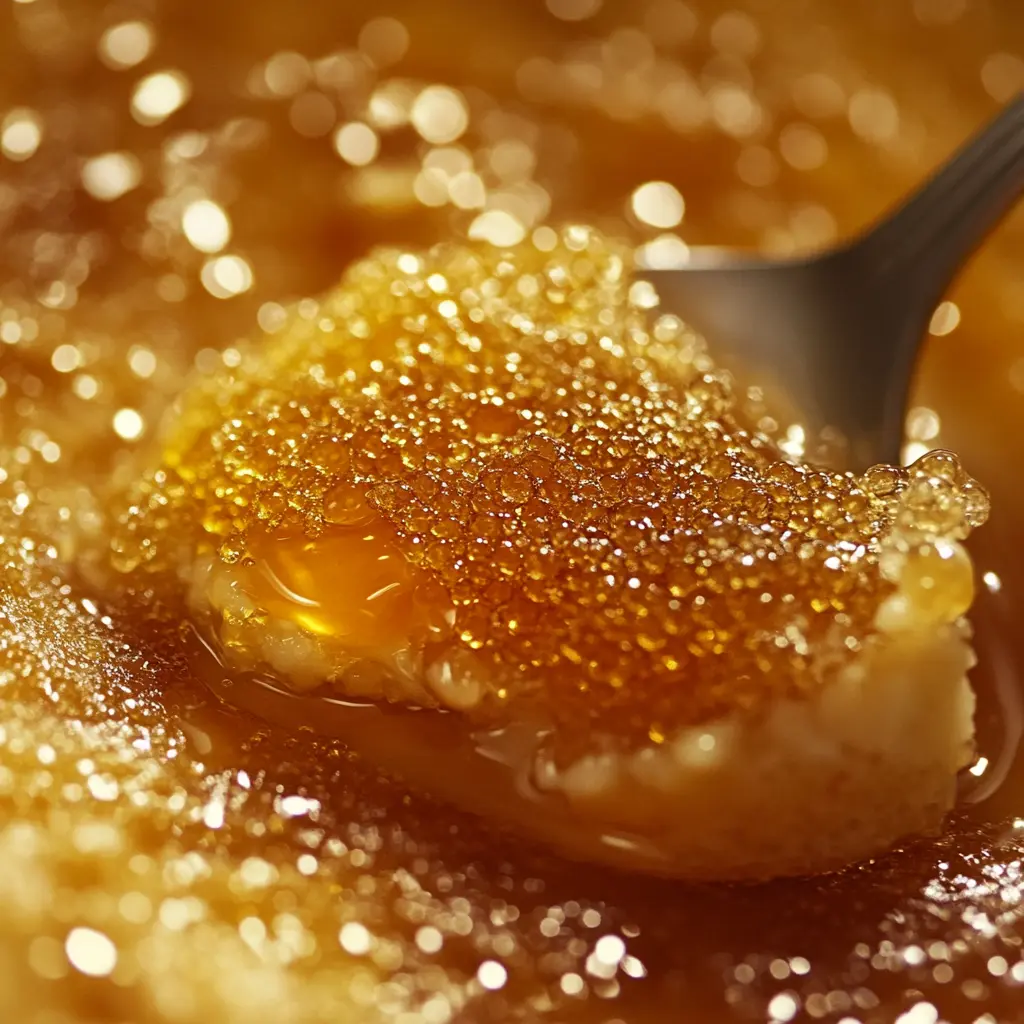
Unlike other custard-based desserts, crème brûlée’s texture isn’t overly dense. Instead, it strikes a delicate balance—dense enough to hold its shape, yet soft enough to provide a melt-in-your-mouth experience. This refined texture is one of the dessert’s defining features, setting it apart from others.
The Crunch of the Caramelized Topping
If the custard is the soul of crème brûlée, then the caramelized sugar is its crown. This thin, brittle layer is achieved by sprinkling sugar over the custard and then using a kitchen torch to caramelize it. The result is a golden-brown crust that offers a satisfying crunch.
Breaking through this crispy topping with the back of a spoon is not only satisfying but also symbolic of the textural journey that crème brûlée offers. The sugar crust provides a delightful contrast to the custard’s creaminess, making each bite a mix of textures that play off each other beautifully.
Why Texture Matters in Crème Brûlée
The dual textures—silky custard and crunchy topping—are what make crème brûlée an unparalleled dessert. It’s a sensory delight, offering something for both the palate and the touch. The combination of creaminess and crunch keeps the dessert exciting, ensuring every spoonful feels like the first.
Part 4: Variations in Taste
Regional Differences
Though crème brûlée is quintessentially French, its popularity has inspired regional adaptations worldwide. In France, the traditional recipe is often adhered to with unwavering precision. However, across the globe, chefs and home cooks have embraced creativity, infusing their own cultural twists into the dessert.
For instance, in some regions, local spices like cardamom or cinnamon are added to the custard, giving it a warm, aromatic undertone. In tropical areas, ingredients such as coconut milk or mango might replace the cream for a unique spin on this classic. These variations don’t overshadow the original; rather, they showcase how crème brûlée’s base recipe serves as a canvas for culinary innovation.
Flavor Infusions
Modern iterations of crème brûlée often include infused flavors that add an unexpected twist. While vanilla remains the classic choice, other popular infusions include:
- Citrus: Zests of lemon, orange, or lime can brighten the custard with tangy notes.
- Coffee or Chocolate: These bold flavors add richness, creating a decadent dessert experience.
- Herbs and Floral Notes: Lavender, rosemary, or even rose can lend a sophisticated, aromatic dimension.
These infusions don’t just alter the taste—they enhance the overall sensory experience, making each variation feel fresh and exciting.
Part 5: Comparing Crème Brûlée to Similar Desserts
Crème Brûlée vs. Crème Caramel
Though they share a custard base, crème brûlée and crème caramel are quite distinct in texture and presentation. Crème caramel features a layer of soft caramel on top that naturally forms during baking. Once inverted for serving, the caramel cascades down, coating the custard. In contrast, crème brûlée’s caramelized topping is hard and brittle, adding a crunchy element absent in crème caramel.
Flavor-wise, crème caramel is typically sweeter, with the caramel integrating more deeply into the custard. Crème brûlée, on the other hand, boasts a nuanced flavor balance between the bitter topping and the mild custard.
Crème Brûlée vs. Flan
Flan, a popular dessert in Spanish and Latin American cuisines, also shares similarities with crème brûlée. Both have a custard base, but flan is often denser and includes condensed milk, giving it a slightly sweeter and more robust taste. Additionally, flan is topped with a syrupy caramel sauce, which lacks the textural contrast of crème brûlée’s crisp topping.
While both desserts are delightful, crème brûlée offers a more refined experience, thanks to its elegant textures and balanced flavors. Each dessert has its charm, but crème brûlée remains a standout for those seeking a sophisticated treat.
Part 6: Pairing Crème Brûlée with Other Flavors
Complementary Desserts
Crème brûlée, though rich on its own, pairs wonderfully with lighter desserts. Fresh fruit like berries, kiwi, or citrus slices adds a bright, tangy contrast to its creamy sweetness. Serving it alongside a crisp cookie, such as a biscotti or tuile, introduces another layer of crunch that complements the caramelized sugar crust.
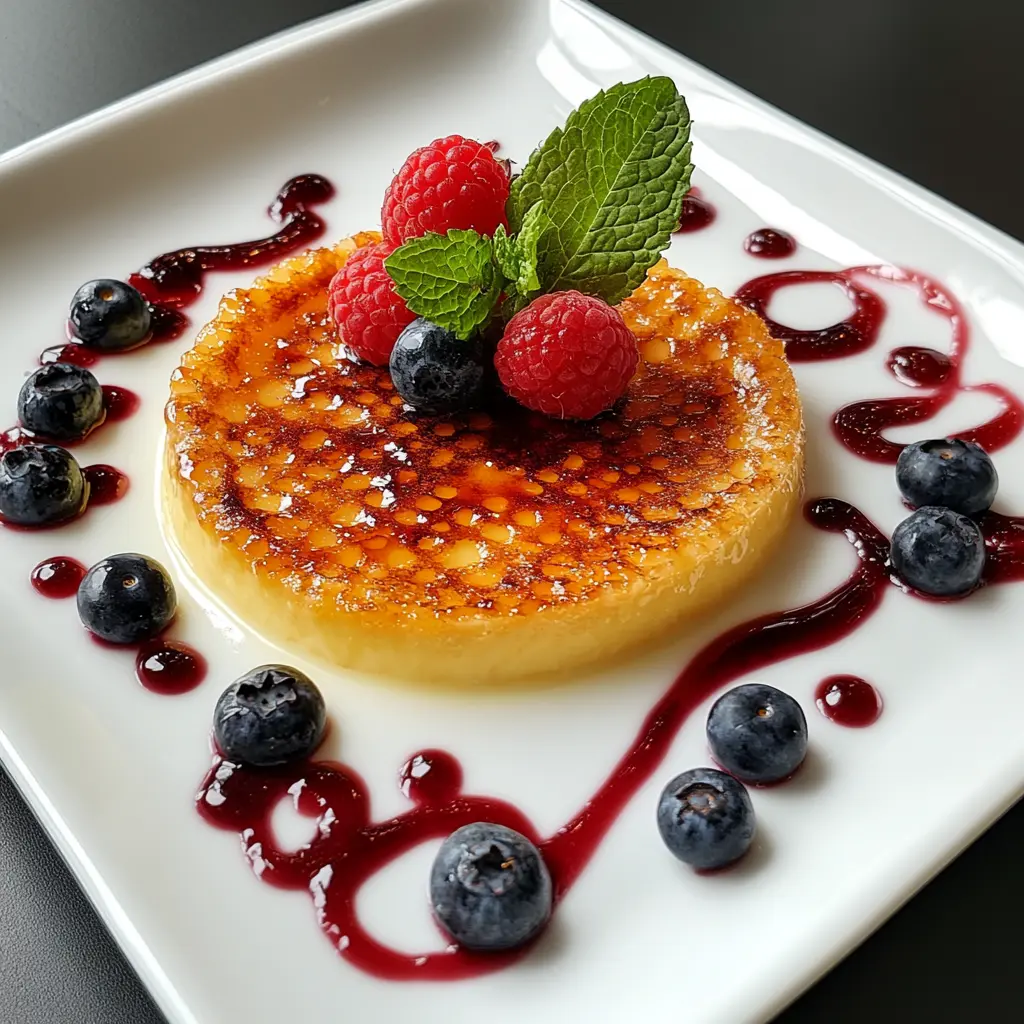
Another popular pairing includes sorbets. Their icy texture and bold flavors—think raspberry or mango—serve as a refreshing counterpoint, cleansing the palate between bites. These combinations not only enhance the dessert but also elevate the dining experience.
Non-Alcoholic Beverage Pairings
For a complete experience, crème brûlée pairs beautifully with drinks that won’t overpower its delicate flavors. A cup of herbal tea, such as chamomile or mint, can provide a soothing accompaniment. Alternatively, freshly brewed coffee complements the caramel notes, offering a harmonious balance to the creamy custard.
Part 7: The Cultural Significance of Crème Brûlée
In French Cuisine
In France, crème brûlée is more than just a dessert—it’s a testament to the country’s culinary finesse. Often served at festive occasions or as a finale to a fine meal, it represents the artistry and precision of French cooking. Its simplicity is deceptive, as creating the perfect crème brûlée requires skill and attention to detail.
Beyond its taste, the dessert embodies a sense of tradition. Recipes are often passed down through generations, and its presence on menus signals a commitment to classic French gastronomy.
Global Popularity
While firmly rooted in French tradition, crème brûlée has achieved global acclaim. It’s featured in restaurants worldwide, adapted to suit regional tastes and ingredients. Its versatility and elegance make it a staple in both high-end dining and casual home kitchens. The dish’s universal appeal lies in its ability to feel familiar yet luxurious, no matter where it’s enjoyed.
Part 8: Common Misconceptions about Crème Brûlée
“It’s Always Extremely Sweet”
One common myth about crème brûlée is that it’s overwhelmingly sweet. However, its flavor is far more nuanced. The custard’s sweetness is delicate, balanced by the bitterness of the caramelized sugar. This interplay ensures that it never feels cloying.
“It’s Difficult to Make at Home”
Another misconception is that crème brûlée is too challenging for home cooks. While it does require attention to detail, it’s surprisingly approachable. With a few key tools—a kitchen torch and a water bath—it’s possible to create a restaurant-quality dessert in your own kitchen.
Part 9: Nutritional Aspects of Crème Brûlée
Caloric Content
Crème brûlée is undeniably indulgent, but its portion size helps keep calories in check. A typical serving contains approximately 200–300 calories, depending on the recipe. Its richness means that even a small portion is satisfying, making it easier to enjoy in moderation.
Macronutrient Breakdown
The dessert is high in fat and protein due to its cream and egg yolks, while sugar contributes to its carbohydrate content. While it’s not the lightest option, its ingredients are wholesome, especially when made from scratch. For those watching their diet, smaller portions can still allow for indulgence without overindulgence.
Part 10: How to Make Crème Brûlée at Home
Essential Equipment
Making crème brûlée at home requires a few specialized tools, but none are difficult to acquire. The essentials include:
- Ramekins: For individual servings
- Kitchen Torch: To achieve the signature caramelized crust
- Water Bath Setup: Ensures even cooking without curdling
Step-by-Step Recipe
- Preheat your oven and prepare a water bath.
- Whisk together egg yolks, sugar, and vanilla extract until smooth.
- Heat cream until warm, then gradually incorporate it into the egg mixture.
- Pour the custard into ramekins, place them in a water bath, and bake until set.
- Chill the custards, then sprinkle sugar on top and torch until caramelized.
This process, though simple, produces a dessert that feels effortlessly elegant.
Part 11: Enhancing the Crème Brûlée Experience
Presentation Tips
Presentation plays a significant role in elevating crème brûlée. A light dusting of powdered sugar, a sprig of mint, or a few fresh berries on the side can make the dessert visually appealing. Serve it in decorative ramekins or glass dishes to showcase its layers.
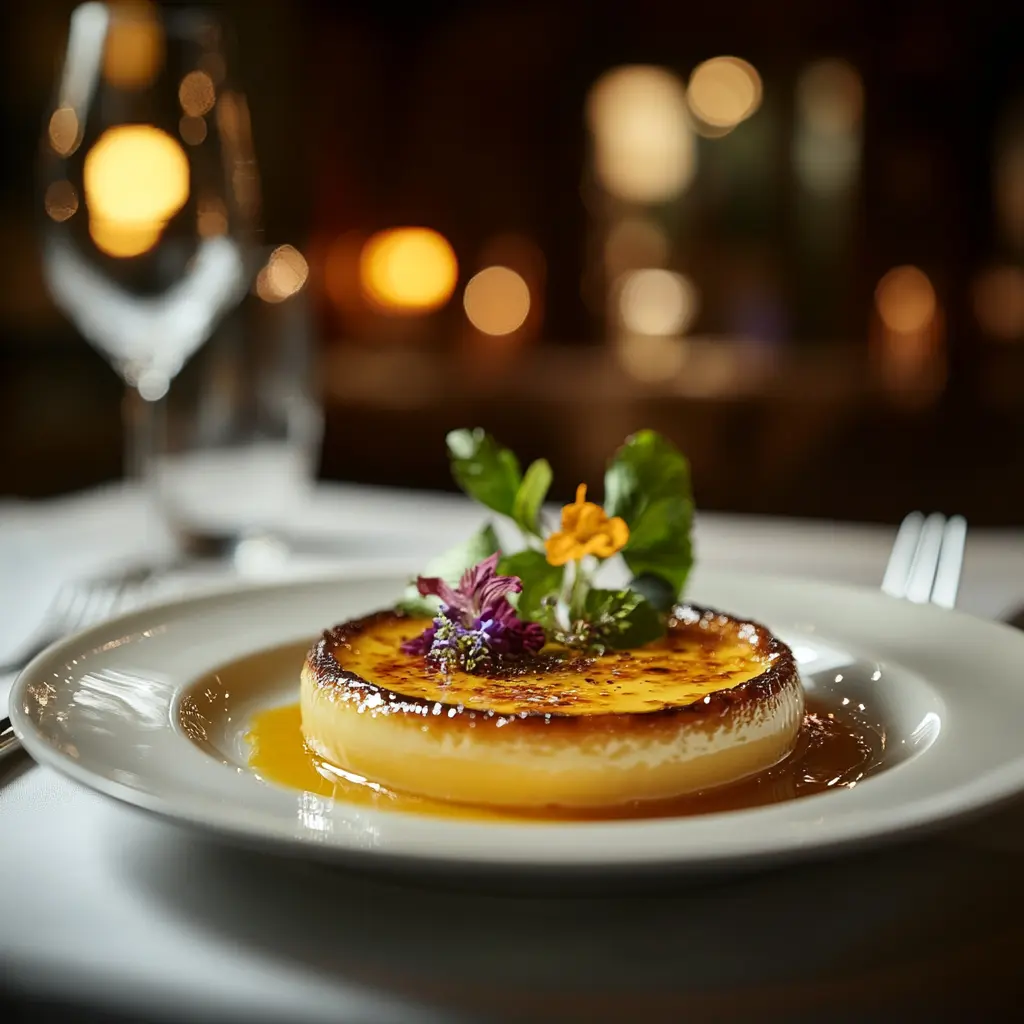
Serving Suggestions
To make crème brûlée feel extra special, consider serving it on a small dessert plate with a teaspoon. The act of cracking through the sugar crust adds an interactive element that guests love. Keeping it chilled until just before serving ensures that the textures remain perfect.
Part 12: Frequently Asked Questions
What is the origin of crème brûlée?
Crème brûlée traces its roots to France, with the earliest known recipe appearing in a 1691 cookbook. Despite debates over its exact origins, it remains a hallmark of French cuisine.
How does crème brûlée differ from flan?
Flan is denser and topped with a syrupy caramel sauce, while crème brûlée is lighter with a crunchy caramelized sugar crust.
Can crème brûlée be made without a torch?
Yes! You can caramelize the sugar under a broiler, although a torch provides more control and precision.
What are common mistakes when making crème brûlée?
Overcooking the custard or failing to temper the eggs properly can lead to curdling. Also, using too much sugar on the topping can make it overly bitter.
How should crème brûlée be stored?
Crème brûlée should be refrigerated and is best enjoyed within 2–3 days. Add the caramelized topping just before serving for optimal texture.
Is crème brûlée gluten-free?
Yes, crème brûlée is naturally gluten-free, as its ingredients—cream, eggs, sugar, and vanilla—contain no gluten. Always verify added flavorings to ensure they’re gluten-free.
Does crème brûlée taste good?
Absolutely! Crème brûlée is widely regarded as a delicious dessert. Its combination of creamy custard and a caramelized sugar crust creates a perfect balance of textures and flavors. The subtle sweetness of the custard, paired with the slightly bitter crunch of the topping, makes it an unforgettable treat for those who enjoy indulgent desserts.
How would you describe crème brûlée?
Crème brûlée is best described as a silky, creamy custard with a lightly sweet vanilla flavor, topped with a thin, crisp layer of caramelized sugar. The contrast between the smooth, rich custard and the crunchy topping creates a unique sensory experience that’s as delightful to eat as it is to admire.
What is crème brûlée similar to?
Crème brûlée shares similarities with desserts like flan, crème caramel, and pudding, as all have a custard base. However, its distinctive caramelized sugar crust sets it apart. While flan and crème caramel are topped with liquid caramel, crème brûlée’s topping is hard and crunchy, offering a different textural experience.
Does crème brûlée taste like pudding?
Not exactly. While crème brûlée and pudding share a creamy texture, crème brûlée is richer and more custard-like due to its high cream and egg yolk content. The addition of the caramelized sugar topping also gives crème brûlée a unique flavor and texture that pudding lacks. Pudding is generally softer, sweeter, and often less complex in flavor.
Conclusion
Crème brûlée is more than just a dessert; it’s a masterpiece of culinary simplicity and elegance. From its creamy custard base to its caramelized sugar topping, it captivates the senses with its perfect blend of flavors and textures. Whether you enjoy its classic vanilla essence or explore creative flavor infusions, crème brûlée offers a timeless indulgence that resonates with dessert lovers worldwide.
Its versatility and cultural significance make it a favorite not just in French cuisine but across the globe. And the best part? With a bit of practice and the right tools, this iconic treat can be recreated in your very own kitchen, bringing a touch of sophistication to any occasion.
Crème brûlée truly lives up to its reputation as a dessert of contrasts—light yet rich, sweet yet balanced, and always satisfying. Whether you’re savoring it at a fine dining restaurant or making it at home, this delightful dish promises to leave a lasting impression. So, why not indulge in its magic and experience its charm for yourself?

